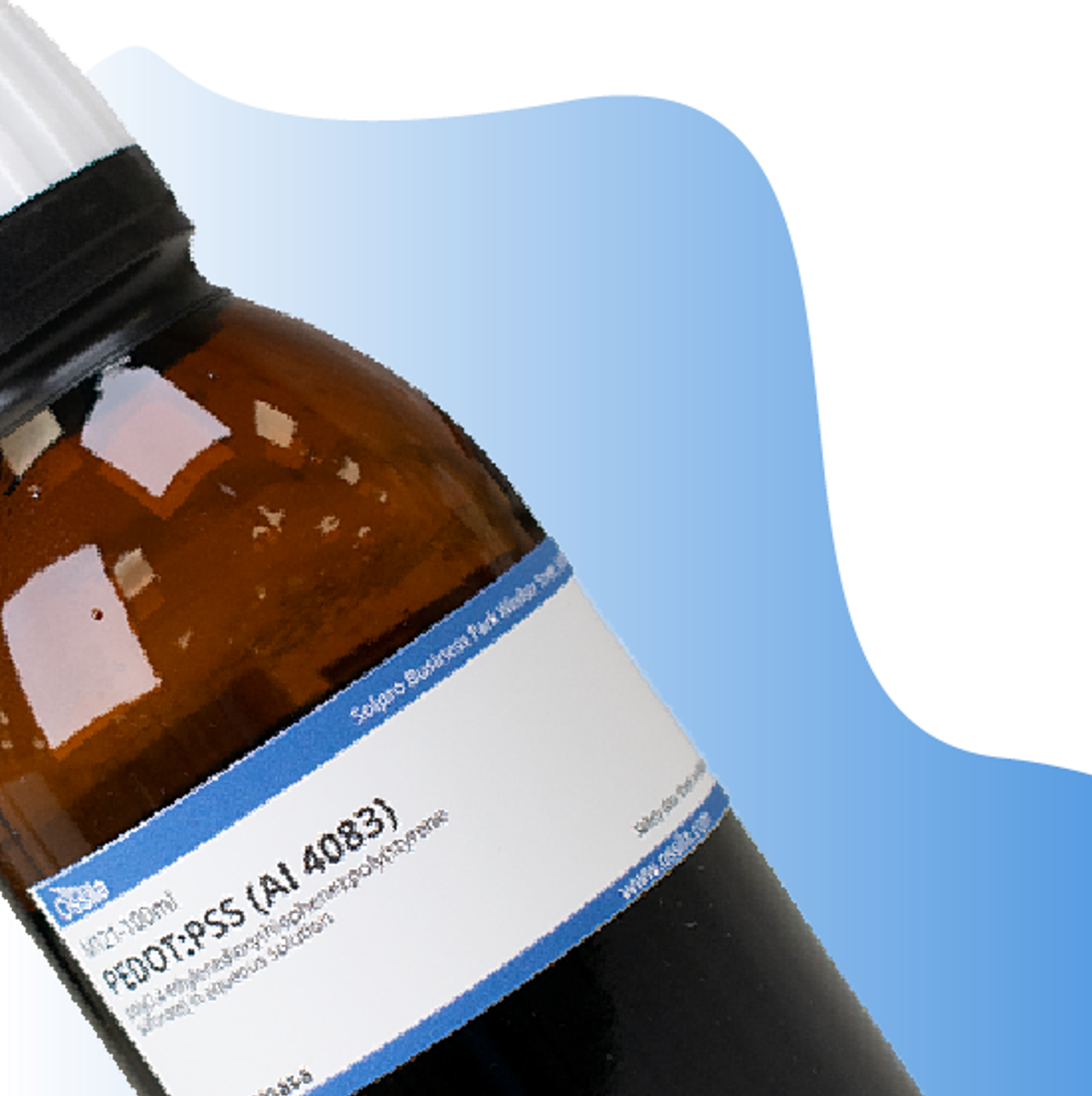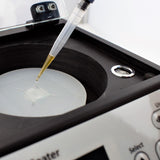PEDOT:PSS Work Function
PEDOT:PSS work function ranges 4.8 - 5.2 eV for commercially available products. It is determined by the ratio of PEDOT to PSS. Increasing the amount of PSS increases the work function of the polymer composite. PSS acts as a dopant and increases the overall oxidation state of PEDOT making it positively charged (p-doped). This increases the hole concentration in the material. More holes means the material has an increased ability to hold onto electrons (higher work function). Examples of how the ratio of PEDOT and PSS impact work function:
| Ratio PEDOT:PSS (w/w) | Example | Work Function / eV | Stability of Suspension | Potential Application |
|---|---|---|---|---|
| 1:20 | CH 8000 | ~ 5.2 | High | Use in OLEDs to reduce unwanted charge drift. |
| 1:6 | AI 4083 | 5.0 - 5.2 | Medium | Organic and inverted PSCs and OLEDs as a hole transport material |
| 1:2.5 | PH 1000 | 4.8 - 5.0 | Low | Electrode or transport layer in device |
Other factors that effect PEDOT:PSS work function:
Post-treatment Methods: Various post-treatment methods, such as exposure to solvents, thermal annealing, or UV-ozone treatment, can modify the surface characteristics of PEDOT:PSS and affect its work function. For example, treatments that remove some of the PSS can lower the work function by exposing more of the conductive PEDOT.
Environmental Conditions: Factors such as humidity and temperature can impact the work function of PEDOT:PSS. Water can trigger leaching of PSS from the composite causing changes in the structural and electrical properties of the polymer.
Substrate Interaction: The type of substrate on which PEDOT:PSS is deposited can influence its work function through interfacial dipole effects. Certain substrates can induce a rearrangement of charges at the interface, altering the material's electronic characteristics.
PEDOT based polymers

- Transparent
- Multifunctional
- Low Cost
Available from £70



